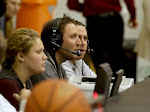Ivy League Preview
 |
| Harvard's Wesley Saunders (AP Photo) |
By Nick Peruffo
nperuffo@trentonian.com
@nickperuffo on Twitter
Coming off a 13-1 Ivy League season and third straight trip to the NCAA tournament, Harvard is once against the favorite in the Ivy League. But that doesn’t mean the Ancient Eight won’t throw up a surprise or two. We try to break down how the league will shake out (last year’s record in parentheses).
1. Harvard (27-5, 13-1) >> Coming off back-to-back NCAA tournament wins over the past two years, the Crimson are once again the clear favorite in the Ivy League. Coach Tommy Amaker’s club does lose three key contributors in big man Kyle Casey, point guard Brandyn Curry and sharpshooting wing Laurent Rivard, but Harvard returns three players named either the first or second All-Ivy team last season. Senior guard Wesley Saunders was the league’s Player of the Year, while point guard Siyani Chambers and forward Steve Moundou-Missi were second-teamers. They’ll also benefit from the return of center Kenyatta Smith, one of the league’s best defensive big men who missed most of last season with a broken bone in his left foot. The biggest question for the Crimson figures to be a lack of outside shooting, but having Saunders and Chambers should mitigate that problem.
2. Yale (19-14, 9-5) >> Outside of Harvard, the Bulldogs’ trio of junior forward Justin Sears and senior guards Armani Cotton and Javier Duren is the most dangerous in the league. The 6-foot-8 Sears is a legitimate Player of the Year candidate, while Duren emerged last season as one of the best two-way point guards in the league. Yale returns nearly all of last year’s squad that finished second in the league, beat Harvard in Cambridge and made in to the CIT final (the biggest departure is sixth man Brandon Sherrod, who is part of the Whiffenpoofs, Yale’s elite, a cappella group whose members travel the world for a year). Though senior forward Matt Townsend and junior guard Nick Victor will contribute, the Bulldogs don’t appear as deep as the Crimson, which could hurt them in Friday-Saturday back-to-backs.

3. Princeton (21-9, 8-6) >> All everything guard T.J. Bray is gone, but the Tigers do return a solid young core led by sophomore wing Spencer Weisz and junior center Hans Brase. The loss of senior forward Denton Koon for the first half of the season with a knee injury certainly hurts, but the Tigers do have plenty of talent in the sophomore and freshman classes. The key could be freshman point guard Amir Bell. With Bray gone, the East Brunswick product could emerge as a starter.
4. Dartmouth (12-16, 5-9) >> The Big Green finished in just sixth place in the Ivy last season, but was without 6-9 Lithuanian big man Gabas Maldunas for the majority of league play after the now-senior tore his ACL. Both junior point guard Alex Mitola (11.8) and power forward Conner Boehm (10.9) averaged double-digit points last season, and senior swingman John Golden is a solid third option offensively and versatile defender. If Maldunas can return to his pre-injury form (he was averaging 11.2 points and 8.2 rebounds prior) the Big Green can make a serious run at the top half of the league. If not, they may be a bit thin up front.
5. Columbia (21-13, 8-6) >> The Lions probably would have edged the Tigers for third in this ranking had forward Alex Rosenberg not withdrawn from school after fracturing his foot to preserve his eligibility for 2015-16. Rosenberg, a 6-7 forward, was one of the top players in the league a season ago, averaging 16 points a 3.7 rebounds per game. Still, Columbia will feature a solid backcourt of Maodo Lo, Grant Mullins, and Steve Frankoski. The 6-11 Cory Osetkowski is a quiet but formidable presence in the post. The key for the Lions may be 6-10 sophomore forward Luke Petrasek, who will need to give Columbia big minutes at the four spot with Rosenberg out.
6. Brown (15-14, 7-7) >> For the last four years, the name Sean McGonagil has been synonymous with Brown basketball. The All-Ivy point guard is gone, but the Bears still have the powerful frontcourt duo of Rafael Maia and Cedric Kuaumensah, a potential breakout candidate in sophomore forward Leland King, and a talented young backcourt of Steven Spieth and Tavon Blackmon. Brown figures to be extremely tough on the boards, but as always depth is a concern in Providence.
7. Penn (8-20, 5-9) >> Things are not well in West Philly. The once-mighty Quakers do return productive junior guard Tony Hicks and 6-11 junior center Darien Nelson-Henry, but its tough to see how Penn is going to be much better than last year, when they finished seventh in the league, without Fran Dougherty or Miles Jackson-Cartwright. The Quakers freshman class, at least on paper, doesn’t seem good enough to make a major impact.
8. Cornell (2-26, 1-13) >> The Big Red were the worst team in the league last season by a significant margin. They could be a bit better this year with the return of senior forward Shonn Miller, although that optimism was dampened significantly with the news that leading scorer Nolan Cressler was transferring to Vanderbilt. Senior guard Devin Cherry is a capable scorer and sophomore big David Onuorah showed promise last season, but the rest of the league is probably too talented to avoid another bottom-tier finish.
 RSS
RSS


0 Comments:
Post a Comment
Subscribe to Post Comments [Atom]
<< Home